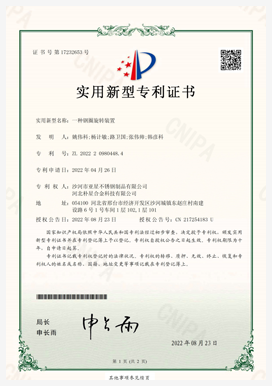rice combine harvester
The Evolution and Importance of Rice Combine Harvesters
Rice is one of the most significant staple foods in the world, providing sustenance for more than half of the global population. As rice cultivation is labor-intensive, technological advancements in agricultural machinery have revolutionized how rice is harvested. Among these innovations, the rice combine harvester stands out as a vital piece of equipment, streamlining the harvesting process and enhancing productivity.
The Mechanism of Rice Combine Harvesters
A rice combine harvester is a sophisticated agricultural machine designed to efficiently harvest rice crops. It combines several operations, including cutting, threshing, and cleaning, into a single process. The fundamental operation begins with the cutting mechanism, where a sharp blade at the front of the machine slices through the rice stalks. Following this cut, the machine employs a threshing mechanism that separates the rice grains from the stalks in a matter of seconds. The final phase involves cleaning the raw grains by removing impurities and straw, leaving farmers with high-quality rice ready for further processing.
Historical Context
Before the advent of combine harvesters, rice harvesting was predominantly done by hand using sickles, a time-consuming and labor-intensive practice. The introduction of mechanized harvesters began in the early 20th century, but the technology has significantly evolved since then. Early models were bulky and limited in capacity, but modern rice combine harvesters are more compact, efficient, and capable of processing much larger fields in a fraction of the time.
The evolution of these machines can be attributed to various factors, such as the growing demand for rice due to population growth, the need for increased agricultural efficiency, and improvements in engineering technology. Today’s rice combine harvesters are equipped with GPS technology, automation, and advanced sensors, enabling precise navigation and operation, which further enhances their efficacy.
Economic and Social Impact
rice combine harvester

The impact of rice combine harvesters on agriculture is profound. Firstly, they significantly reduce the time and labor required for harvesting. What used to take hundreds of laborers days to complete can now be performed by a single machine in just a few hours. This efficiency is crucial, especially in regions where climate conditions necessitate swift harvesting to prevent crop spoilage.
Moreover, the use of combine harvesters contributes to increased yield quality. By reducing the time from field to storage, the likelihood of grain damage decreases, resulting in better-quality rice. Consequently, farmers can secure better prices for their harvests in the market.
On a broader scale, the transition to mechanized harvesting helps to address labor shortages in rural areas, a challenge exacerbated by urban migration. With fewer people available to work in agriculture, the reliance on machinery becomes essential for maintaining productivity levels and ensuring food security.
Challenges and Future Trends
Despite their advantages, rice combine harvesters also face challenges. The initial investment cost can be prohibitive for smallholder farmers, and there is a learning curve associated with operating advanced machinery. Additionally, maintenance and repairs may pose logistical issues in remote farming areas.
The future of rice harvesting technology lies in innovation and sustainability. Researchers and manufacturers are focusing on developing eco-friendly and energy-efficient harvesters to minimize environmental impact. Furthermore, advancements in artificial intelligence and machine learning are likely to lead to even more precise and efficient harvesting techniques, further optimizing the process.
Conclusion
In conclusion, rice combine harvesters play a crucial role in modern agriculture by enhancing efficiency, improving crop yields, and adapting to the challenges posed by labor shortages in rural communities. As technology continues to evolve, it is essential for farmers, especially in developing countries, to embrace these innovations to ensure sustainable food production and security. The evolution of rice combine harvesters symbolizes the broader trend in agriculture towards mechanization and modernization, reflecting humanity’s ongoing quest to improve food production methods in an increasingly demanding world.
Latest news
-
Mini Combine Harvester for Soybean | Compact & Efficient Soybean Harvesting SolutionsNewsNov.24,2025
-
Mini Combine Harvester for Paddy – Compact, Efficient Rice Harvesting SolutionsNewsNov.24,2025
-
Mini Chain Harvester: Compact Forestry Solutions for Sustainable LoggingNewsNov.23,2025
-
Kartar Mini Harvester – Compact, Efficient Harvesting Machinery for Small FarmsNewsNov.23,2025
-
Compact Power: Elevate Your Farming with Harvesting Machine SmallNewsNov.22,2025
-
Discover the Power and Potential of Harvester Mini Combine Machines | Efficient Small-Scale HarvestingNewsNov.22,2025








